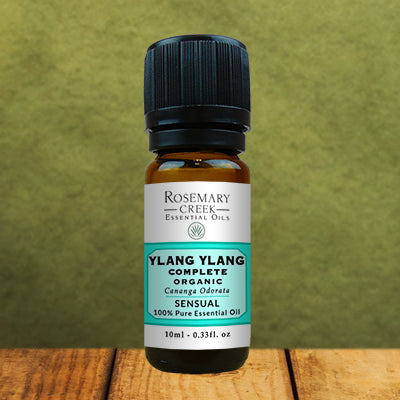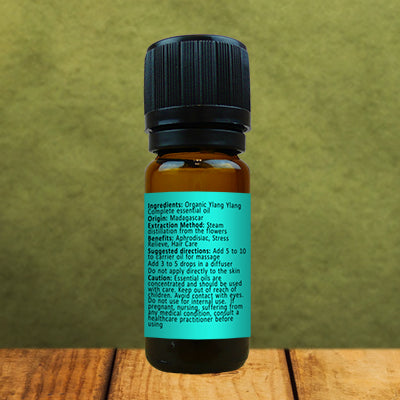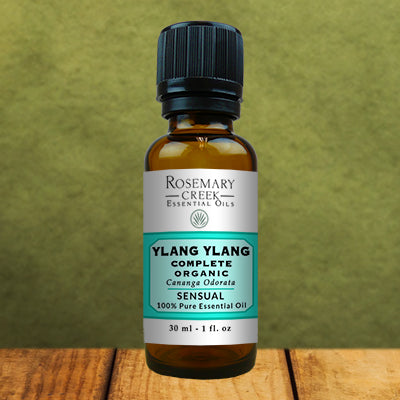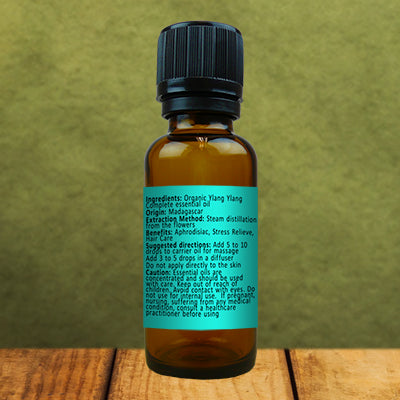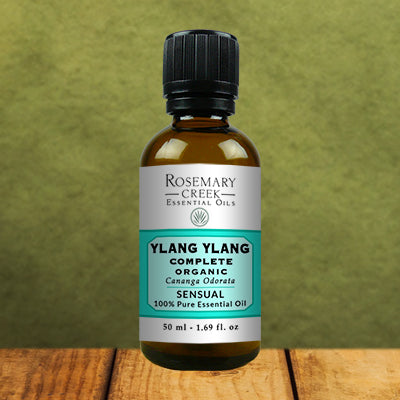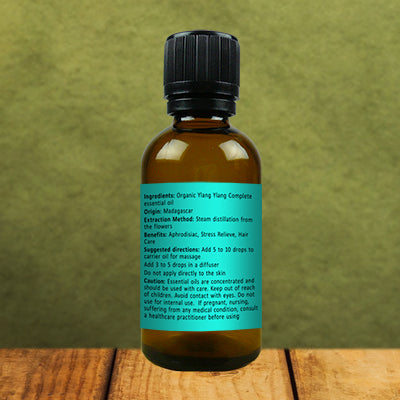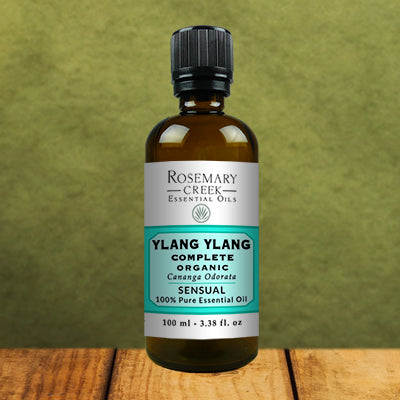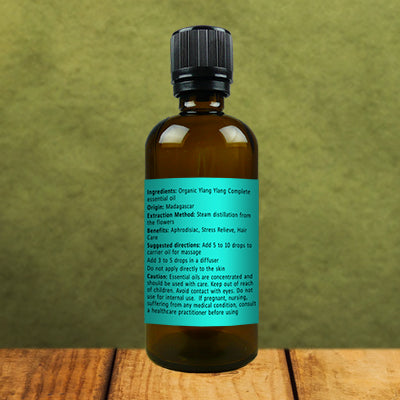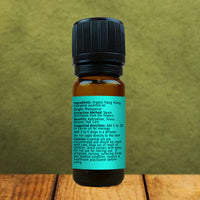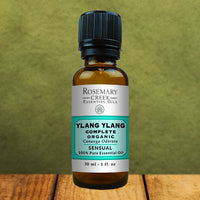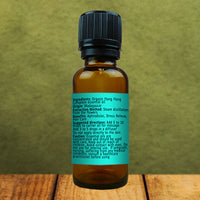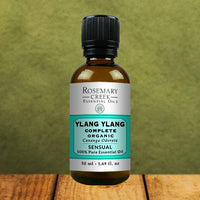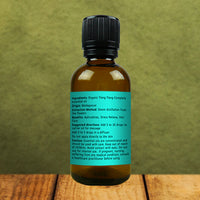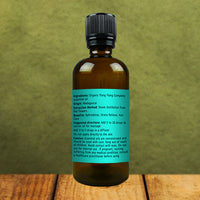Organic Ylang Ylang essential oil
-
Product Info
History and General Information
Ylang Ylang essential oil is distilled from the flowers of the Cananga Odorata tree. Native to The Philippines, it is tropical evergreen tree known by many names including – Ylang-Ylang, Perfume Tree and Fragrant Cananga. This tree belongs to the Magnolia family.
Ylang Ylang is a fast growing tree which can grow over 5 meters in a year. It is a tall tree with an average height of about 12 meters. The tree bears fragrant yellow-green flowers. The star shaped six petaled flowers are highly fragrant with a heady sweet fragrance.
The tree was introduced to reunion Islands in the 18th century and was then taken to Madagascar and Comoros. The plant adapted very well to this new environment and climate and makes Madagascar now the leading producer of Ylang Ylang essential oil.
Extraction of Ylang Ylang Essential Oil
The Ylang Ylang essential oil is obtained from the sweet-smelling flowers of the plant. They are steam distilled to yield a highly fragrant oil which is widely used in the perfume industry. There are 5 different grades of oil obtained. These are – Ylang Ylang Extra, Ylang Ylang I, II, III and Ylang Ylang complete. The classification is based on the time of distillation. Ylang Ylang Extra, I, II, III are considered more fragrant and are destined to the perfume industry. Ylan Ylang Complete is the final distillation, which can last from 6 to 20 hours. This grade is the one used in aromatherapy. The long distillation process retains more compounds and all the heady floral fragrance. Our Ylang Ylang essential oil has the complete grade
Aphrodisiac/Sensual Effects of the Essential Oil
Some essential oils are known for their aphrodisiac properties. They enhance the libido and improve the sex drive by stimulating the pituitary gland which releases the hormones needed for a healthy body and sexual energy. Ylang Ylang is known for its effect on the libido. Its sultry floral fragrances stimulates the limbic system and enhances the sexual desires.
Ylang Ylang oil is also known to improve blood circulation and can help in impotence when used on the skin. This oil influences the sexual energy and relationships and enhances sensuality between a couple. In Indonesia, the flowers are sprinkled on new weds’ bed to make the experience more meaningful and satisfactory. Placing a cotton bud soaked in the oil by the bedside has just the same effect.
To create a sensual massage oil, add 15 drops of Ylang Ylang essential oil and 10 drops of grapefruit essential oil to ½ ounce of Jojoba oil.
Ylang Ylang and Hair Care
Ylang Ylang oil has been traditionally been used for treatment of alopecia and hair loss due to stress and illness. Massaging the oil into the scalp and hair follicles, stimulates growth of hair. It also acts as a natural hair conditioner to rejuvenate dry and brittle hair. It encourages the production of sebum by stimulating the sebaceous glands thus keeping the hair moisturized. Its anti-microbial properties ensure a healthy scalp and hair that looks healthy and beautiful.
To create a hair growth lotion, add 25 drops of Ylang Ylang, 20 drops of Peppermint and 20 drops of Tea Tree essential oils to a cup of coconut oil. Massage the scalp and wait at least 30 minutes before showering.
Anti-Stress and Relaxation Properties of Ylang Ylang Oil
Ylang Ylang essential oil is believed to be beneficial for stress, anxiety and promotes relaxation. It contains linalool, a compound with stress reducing properties. According to some studies, the topical application of the oil may help to combat or reduce stress levels. Additionally, inhaling the perfume may help alleviate anxiety, promote calmness and provide a soothing effect on the mind and body. There are indications, that it may also be beneficial in hypertension. In combination with some other essential oils, it was found to lower blood pressure.
After a long day of work, add 5 drops of Ylang Ylang and 5 drops of Lavender essential oils to a diffuser, bath salt or bath water. The pleasant and relaxing scent will help to relax body and mind.
Chemical composition of the Ylang Ylang essential oil
Ylang Ylang essential oil chemical composition is rich and balanced. It contains linalool which has sedative action:
_ Germacrene-D
_ Beta-Caryophyllene
_ Linalool
_ Geranyl Acetate
_ FarneseneSuggested directions.
The best way to use the Ylang Ylang essential oil is by massage or diffusion. For diffusion, add 3 to 5 drops in a diffuser.
To create a massage oil, add 10 to 15 drops to a ¼ cup of carrier oil, such as coconut oil or almond oil. Do not apply undiluted directly to the skin.
Do not absorb this essential oil orally.
Ylang Ylang essential oil mixes very well with lavender, tea tree, peppermint, frankincense, grapefruit, sweet orange, lemongrass, rosemary, patchouli and monarda essential oils.
Additionnal information:
Botanical Name: Cananga Odorata
Common names: Ylang Ylang, Fragrant Cananga, Perfume Tree
Extraction method: Steam distillation
Color: Colorless to light yellow
Consistency: Thin
Origin: Organic
Country of origin: Madagascar
Botanical family: Anonaceae
Plant part used: Flowers
Odor: Floral, fruity, green, butteryCaution:
Essential oils are concentrated and should be used with caution. Keep out of reach of children.
Avoid contact with the eyes.
Do not ingest. This essential oil should not be taken internally unless recommended and supervised by someone who is qualified.
Do not use if pregnant, nursing, elderly and for children under 7 years of age. If suffering from any medical condition, consult a healthcare practitioner before using.
Do feel free to ask for further information and applications.
DISCLAIMER: Essential oils are not meant to cure diseases and illnesses. They may ease some health problems and bring comfort. We suggest you consult a physician and do your own research for each essential oil that interests you.
To get more safety information, read our article about the risks of using essential oils.
-
Brand:
Rosemary Creek Essential Oils
-
Collection:


